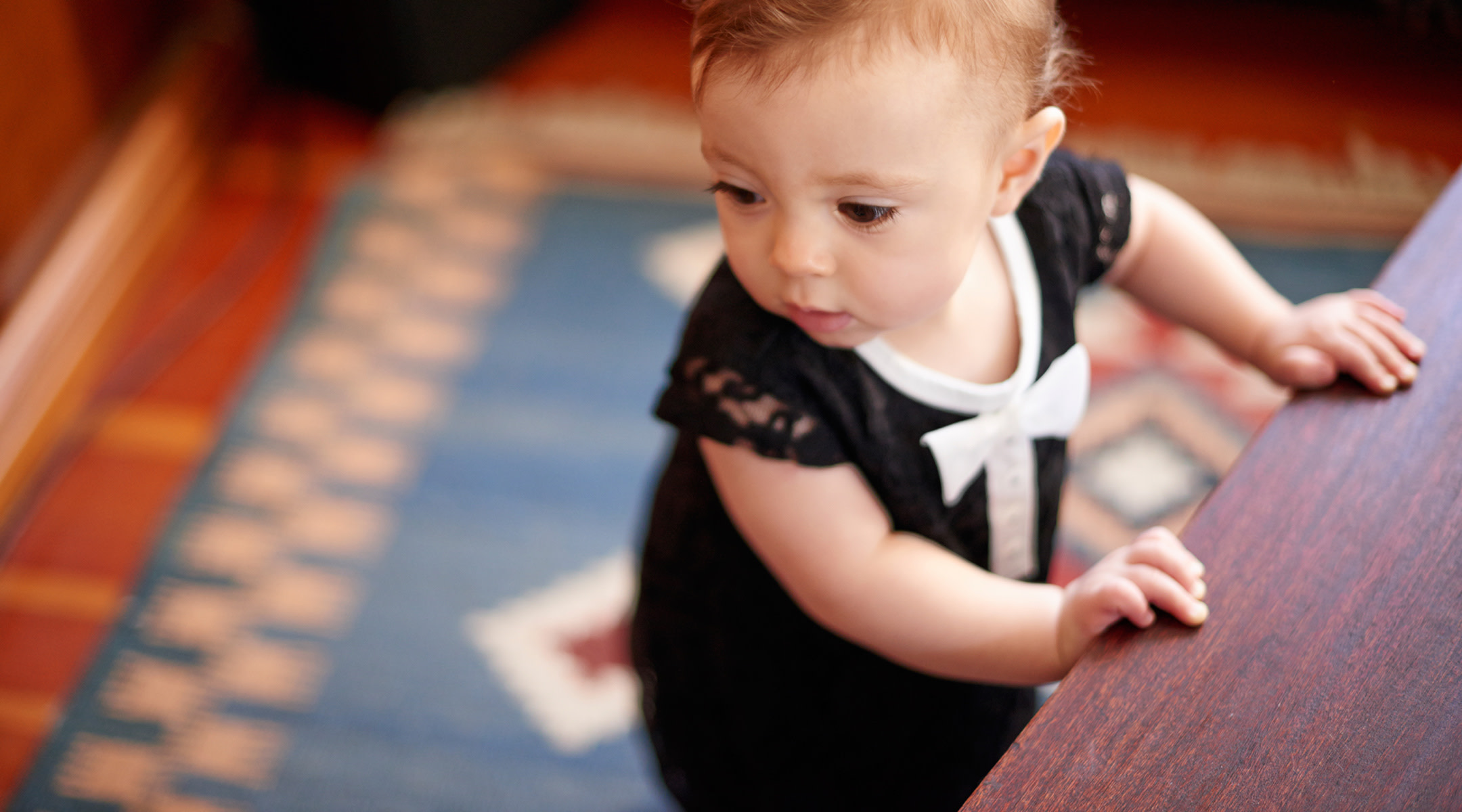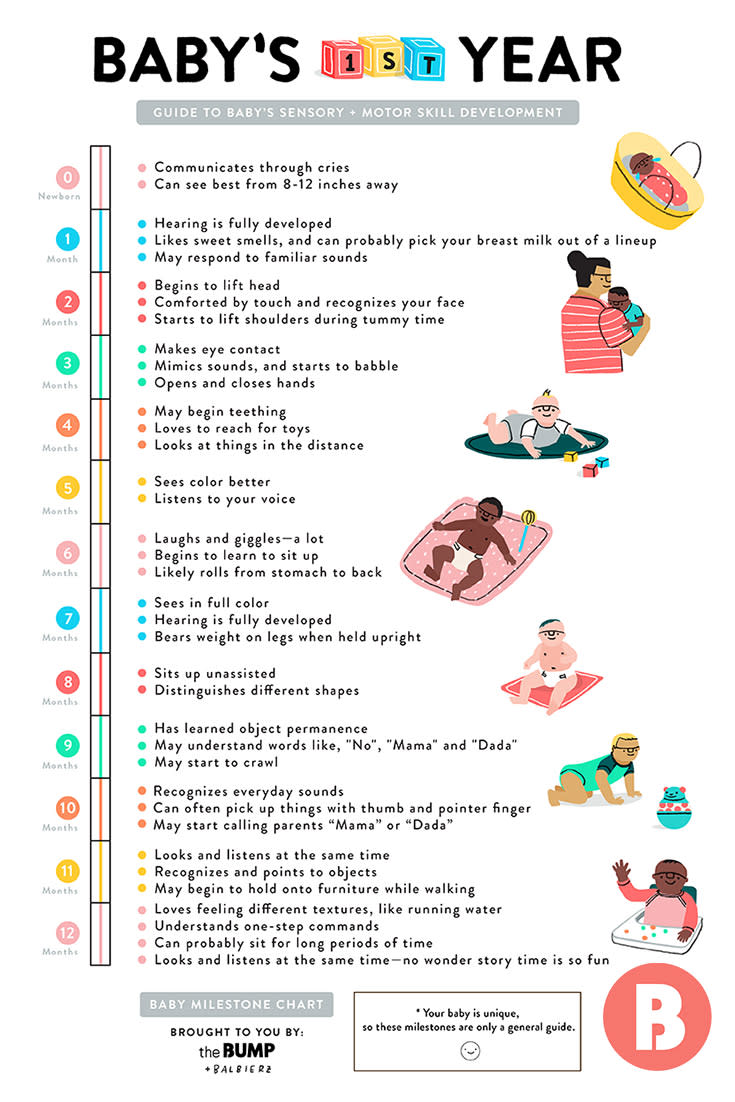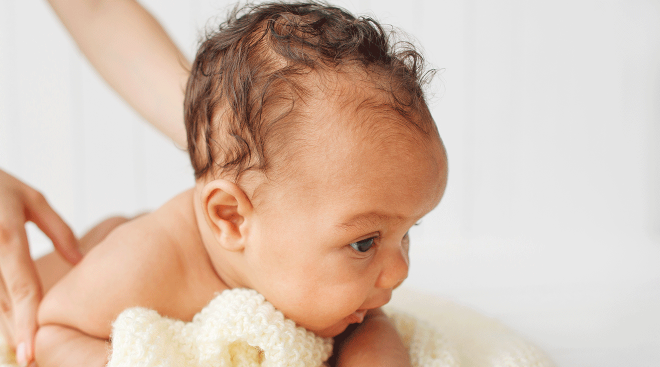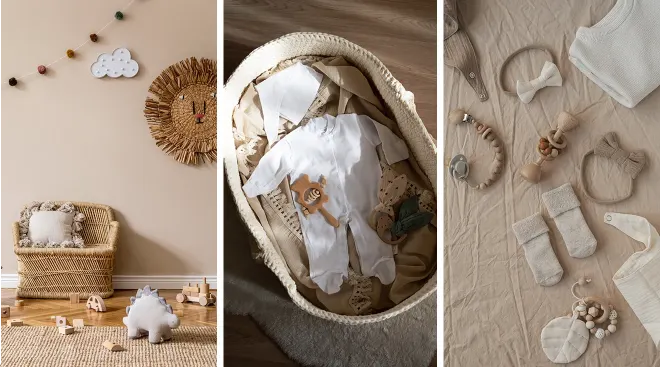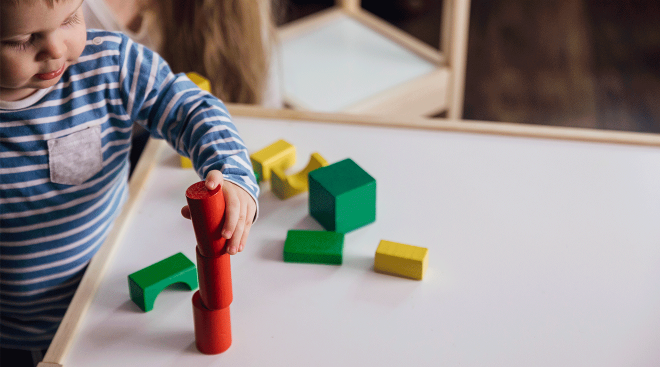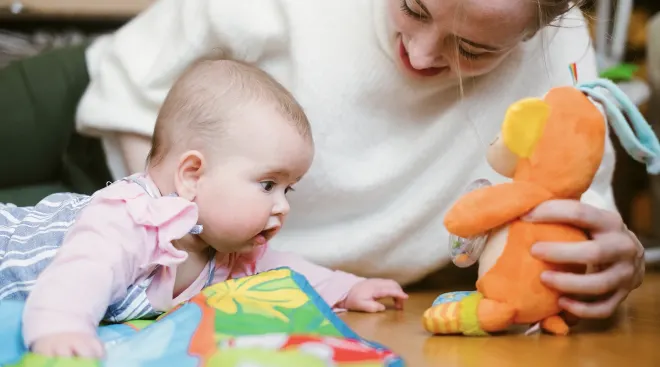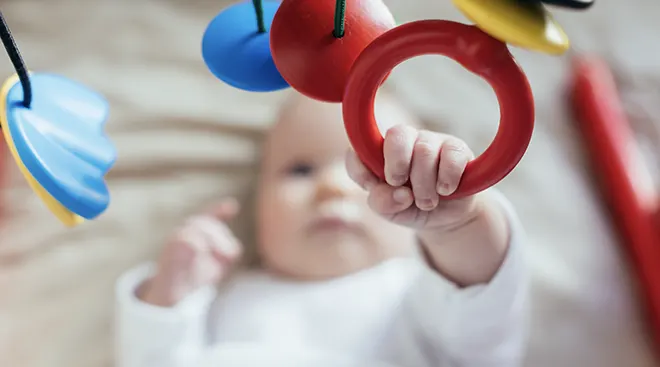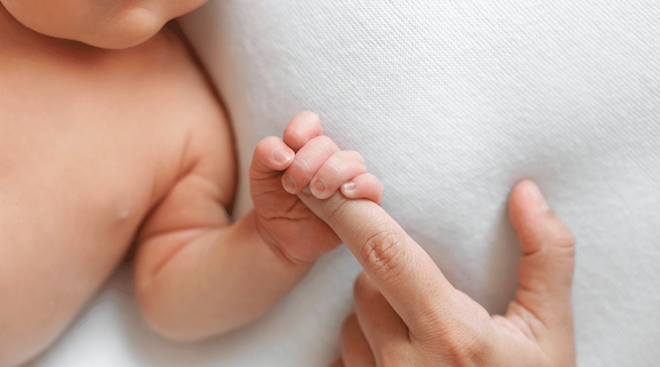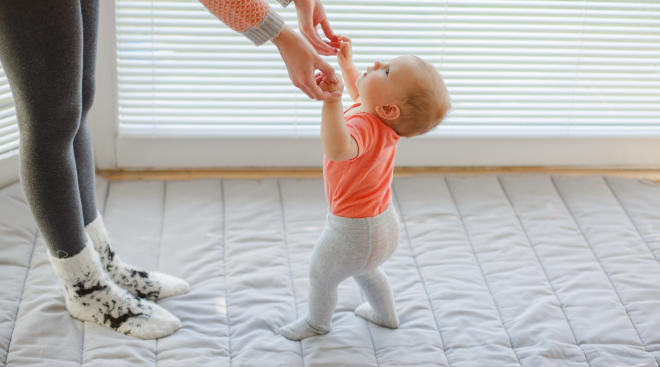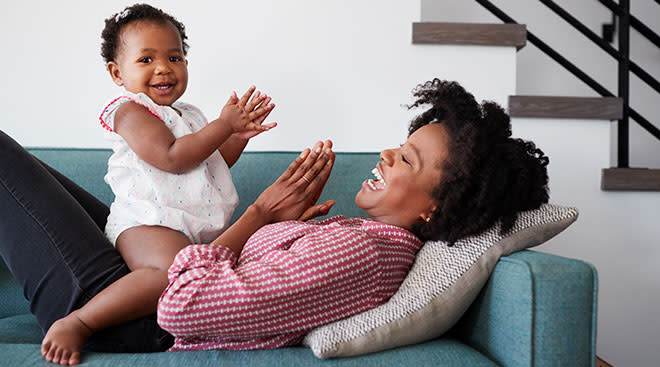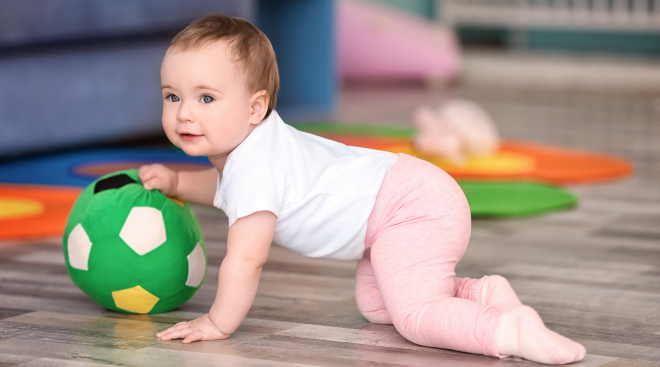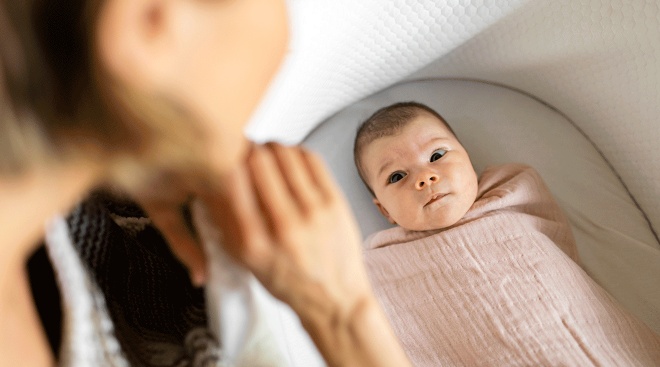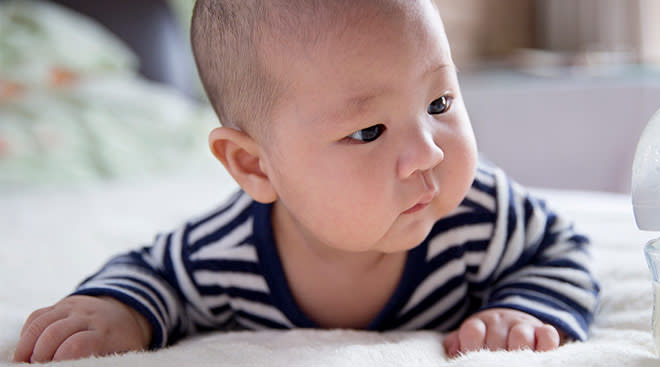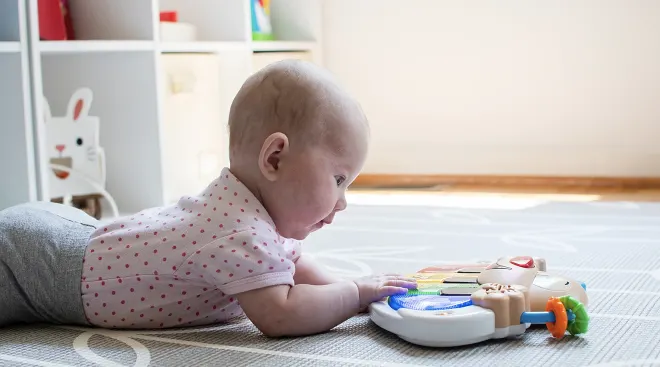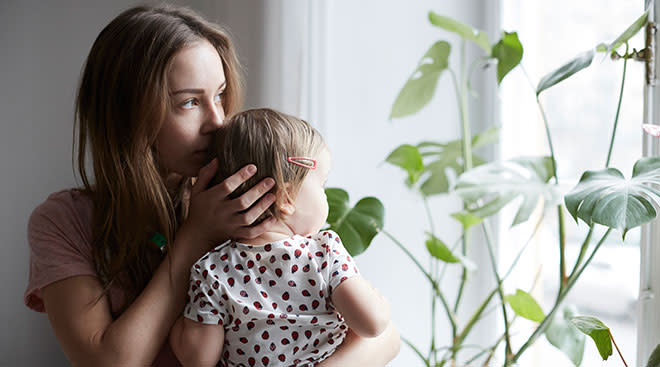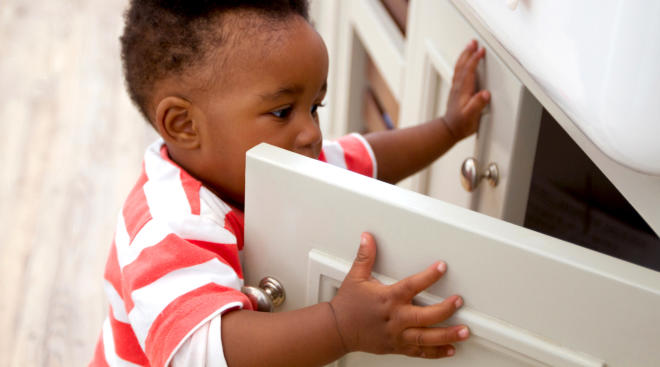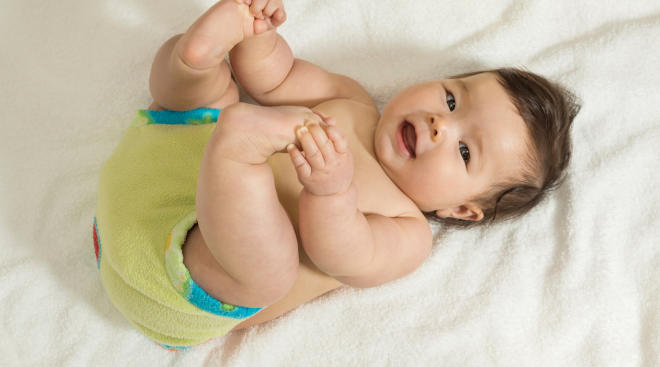To you, it’s just a sofa. But to baby, it’s a challenge.
Standard household objects, from furniture to toys, can play a role in baby’s motor skill development, a new study published in the journal Physical Therapy determined.
“Parents, doctors or other infant caregivers might ask ‘What does a toy or a coffee table do?’ Well, depending on the space between the couch and the coffee table, it could be the first distance that the child wants to cross,” says Priscila Caçola, an assistant professor of kinesiology in the UT Arlington College of Nursing and Health Innovation where the study was conducted. “If a toy is cranked and pops up, the child might want to go grab it, which could lead the child to walking. But the challenge is the thing that stimulates that child to begin walking.”
Caçola developed a questionnaire for caregivers of infants 3 to 18 months old to evaluate household items, referred to as affordances, that can aid in motor skill development or encourage activity like walking. Now, physical and occupational therapists worldwide are using that questionnaire, called the Affordances in the Home Environment for Motor Development-Infant Scale (AHEMD-IS).
This scale is especially important for parents of preemies, who may need extra help developing both fine and gross motor skills.
“Developing a child’s motor skills is extremely important because motor development is actually the mediator of cognitive, social and emotional development,” Caçola says. “Good motor skills predict a whole lot later in life, so it might be something that all of us should be concerned about early in a child’s life.”
To conduct the study, researchers administered the questionnaire to the parents of over 400 infants in three Brazilian states. They were asked whether or not they regularly played games with their child, if there was enough space for the child move freely, if there was a designated play area, and so on.
“When parents buy toys, they’re rarely thinking ‘I wonder if this is going to be great for my child’s fine or gross motor skills,’ but if they look at each AHEMD-IS question and each separation of the question, they can choose to buy toys that are different or that offer different opportunities for their infants,” says Caçola.
Want to try it for yourself? Find the survey here!
Please note: The Bump and the materials and information it contains are not intended to, and do not constitute, medical or other health advice or diagnosis and should not be used as such. You should always consult with a qualified physician or health professional about your specific circumstances.
Navigate forward to interact with the calendar and select a date. Press the question mark key to get the keyboard shortcuts for changing dates.
































